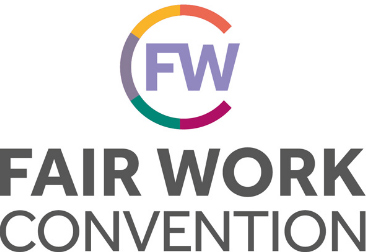Existing data for Scotland shows that the gender pay gap is wider for employees in their 40s and 50s, compared with employees in younger age groups. While multiple factors contribute to this gap, what can we learn from women’s experiences of pay and progression at work, and what actions can employers take to improve opportunities for older women?

A new research study by the National Institute of Economic and Social Research, funded by the Fair Work Convention, highlights a range of barriers faced by women over 50 in the workplace in Scotland. Based on qualitative research with women and employers in two sectors, the study looks specifically at workplace practices, and how factors such as training opportunities, access to flexible working, and occupational health play a vital role in shaping progression opportunities for older women in Scotland. The research report, published this week, draws particularly on in-depth interviews with women, giving voice to their lived experiences in the workplace and highlighting the need for increased intervention by employers and policy makers. The sectors in question were the finance and insurance sector, and the information and communication sector.
We know from existing research that a number of factors drive the gender pay gap across all age groups. One notable factor is the historic and ongoing lack of progression opportunities for part-time workers. Crucially, this is a group of workers who are most likely to be women. Indeed, our research illustrates how flexible work, and part-time work in particular, is vitally important for many women over 50 given their often-substantial caring responsibilities for spouses, children, grandchildren, and elderly parents. Flexible working is also valued as a means of helping to manage health-related issues, particularly chronic health conditions and symptoms relating to the menopause.
Our study shows how the need for flexible work can shape women’s capacity not only to pursue promotions but also to take up training or other additional responsibilities, especially where these are time- or travel-intensive. The report recommends, therefore, that employers consider both the availability of part-time work at senior levels and the extent to which part-time workers have equal access to additional opportunities that would support their progression. Similarly, the provision of flexible working must be supported by a workplace culture that respects and upholds flexible working: for example, in our research we spoke to women who had left part-time jobs at senior levels due to either direct or indirect requirements to work beyond their contractual hours.
Our study further suggests that the willingness of women over 50 to pursue promotion opportunities is shaped by a few concerns around their age. For example, many women in our study expressed beliefs that younger workers have a comparative advantage in recruitment processes. In part, this was because they felt that younger workers may have a more ‘desirable’ skill-set, particularly in terms of technological skill or familiarity with social media. It was also because they felt that younger workers typically have more experience with contemporary recruitment practices. Many women we interviewed cited anxiety around activities such as psychometric testing or scenario-based tasks as a key reason for avoiding switching jobs or pursuing promotion. Women also expressed concerns about ageism among employers: they feared that employers would see older workers as either too close to retirement or somehow less efficient or productive than younger workers. Again, such concerns often discouraged these women from pursuing opportunities for better pay and progression.
While the women in our study expressed concerns about ageism, the employers we interviewed were less likely to consider age as a barrier in the workplace. Indeed, while most of the larger employers we spoke to monitored training, pay, and progression by gender, they did not monitor these data by age. Although the sample of employers in our study was small, this finding resonates with larger-scale research that shows how few employers view age as an important aspect of diversity and inclusion in the workplace.
Moreover, many of the employers we interviewed expressed a belief that it was easier to talk about gender than age in the workplace. For example, while recognising that retirement-planning, re-training for older workers, and the menopause were all important issues, these same employers expressed anxiety and uncertainty about how to address these issues in an appropriate and sensitive manner with their employees. Our study recommends, therefore, that employers could benefit from increased support and guidance on age in the workplace, and particularly on the following: ageism in recruitment and promotion processes; retirement and succession-planning; and recognising and addressing training needs among older workers.
Finally, the menopause was a central theme emerging in our interviews with women. Crucially, women spoke not only about the difficult physical symptoms associated with the menopause but also about how these contributed to a more general loss of confidence at work – a loss of confidence that often persisted even after the physical symptoms had resolved. Women also talked about stigma around the menopause, which left them feeling reluctant to ask for support in the workplace. Our study further suggests, however, that awareness and understanding of the menopause varies considerably both among women and among employers, often in line with individual personal experiences or exposure to the experiences of others. For this reason, the study recommends that employers should consider both occupational health interventions to support women and compulsory training on the menopause at all levels of their organisations in order to improve understanding and to facilitate women’s willingness to seek support.
Taken together, these findings point towards the vital importance of employer-led interventions in addressing both age and gender inequality in the workplace. Given our ageing workforce, and recent labour shortages that have been driven partly by older workers dropping out of the labour market, such interventions must now be prioritised by policy makers and employers alike.
Dr Katharine Stockland
Senior Social Researcher, National Institute of Economic and Social Research
